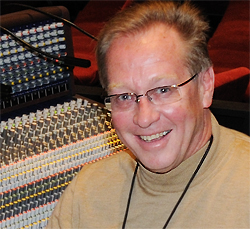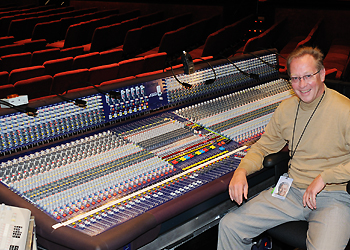
It’s also about honesty and open communication. “If you can’t do something, you better tell them, and, if there’s something you can do, you better do it. Sinatra was uncompromising, no bullshit, if you did what you did well, you had a job for life.”
This culture is now endangered in an industry where reaping the immediate and limited rewards of overnight success has become more important than longevity and craft, where 10-12 weeks on a TV show can buy instant – if fleeting – stardom. “The one common ingredient is that it took 10,000 hours and 10 years to learn their craft,” he explains. “Working clubs, knowing what to leave out; knowing how to deal with a heckler.” And, after that, still learning something new every day, seeing success as only a step in the journey, not the end.
Granted, few audio engineers get the chance to work in such a unique setting and culture. “I specialize in providing sound reinforcement for acoustic instruments. The basic lesson I learned is what to leave out. When I do soundcheck with Tony I do monitors from front of house. The essence is that the sound starts and stops on stage – a lot of guys won’t even talk into the microphones so that they can actually hear the relationship between the stage and PA. But I want to hear what he’s hearing.”
That relationship, he feels, is key to making the artist’s stage sound as complete as possible. “Tony and Sinatra both, when they started singing they were basically hearing the PA coming back from the room. They never really liked wedges. They kind of considered that a one-dimensional sound. It masked what the house was doing.

“So I fly four side-fills – a pair upstage and a pair downstage, 90 degrees from Tony, and then drop in two side-stage wedges that are timed with the side-fills. Then I time the PA to that. So I’m creating two spaces that marry together.”
…
The approach enhances the dynamic range of the performance naturally, allowing the band and Bennett to maintain a fluid, musical dialog. “They know how to bring it from a whisper to a roar, and that’s what really excites the audience.”
It was an ethic that Bennett wanted to bring to his studio recordings, so Young first recreated the setup at New York City’s Hit Factory studios for 1999’s Tony Bennett Sings Ellington: Hot and Cool. It became Bennett’s preferred approach to recording, and in 2002, Young won a Grammy Award for engineering Bennett’s Playing With My Friends.
However, Young doesn’t measure success by hardware; rather, it’s about building relationships and having the right attitude. “How you deal with people is why people keep jobs for a long period of time. It’s not something you can really teach. It’s kind of innate.”
After reading about a very challenging Bennett performance in Mexico, where all gear, including a nine-foot concert grand piano had to be carried across a quarter-mile of beachfront, I ask if he’s ever had doubts about being able to pull off a show?
“I don’t think I’ve ever taken that attitude,” he responds, telling me another story about a gig in Pompeii, where the gear was trucked in by horse-drawn cart. “The show must go on. I don’t remember one that didn’t.”
Again, it’s about the end result – the show. “It’s not how you start. It’s how you finish.”
